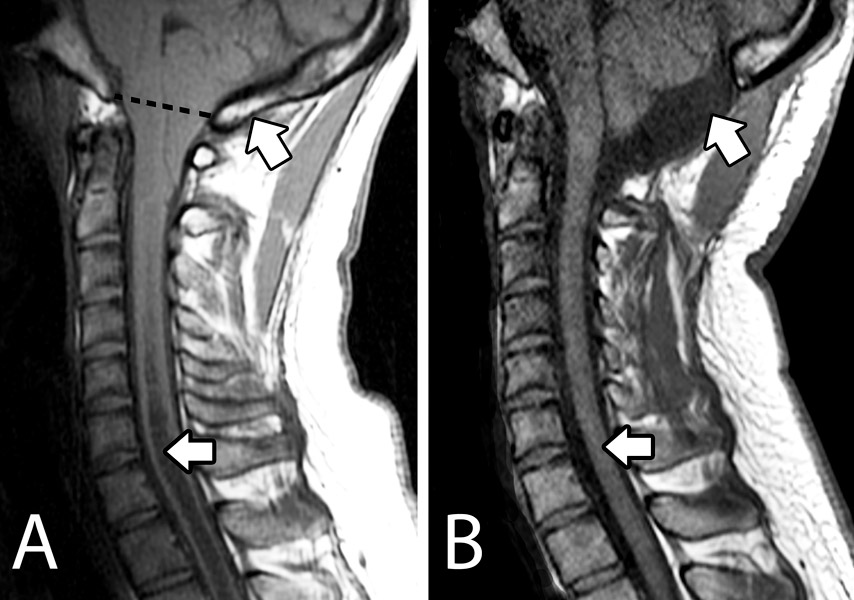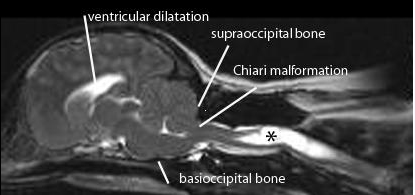|
About Kicks & Licks
Kicks & Licks is ASAP's annual fundraiser supporting canine Chiari malformation and Syringomyelia. Over a dozen breeds are known to be affected by these painful disorders, most notably the Cavalier King Charles Spaniel. Other victims include the pug, boston terrier, french bulldog, dachshund, toy poodle, min pin, bichon, maltese, chihuahua, pekinese, staffordshire terrier, brussels griffon and yorkshire terrier.
Many people suffering with syringomyelia find the clinical signs experienced by dogs familiar. Pain is by far the most important feature of the disorders and it is important to understand the many ways dogs display pain symptoms. Treatment for dogs is very similar to humans with these same conditions. Through our partnership with man's best friend, we hope to better understand genetics and symptoms and why and how Syringomyelia develops. Our goal is to provide new understanding and treatment methods for both dogs and persons affected with Chiari Malformation and Syringomyelia.
Beginning in 2017 in Arlington, VA, the first annual Kicks & Licks fundraiser ASAP partnered with Dr. Lauren Talarico from VCA Southpaws Veterinary Specialists for an ASAP funded research project with the pediatric neurosurgery team at Children's National Medical Center in Washington, DC. The project performed follow up studies on canines that have been surgically treated for their Chiari and syringomyelia. Results from the study have been published via ASAP. Details about upcoming research projects funded by the 2018 and 2019 annual Kicks & Licks are coming soon.
ASAP supports canine Chiari disorder through research funded by the annual Kicks & Licks fundraiser as well as discussions with renowned neurovets, such as Dominic Marino, DVM of the Canine Chiari Institute. Dr. Marino presented research findings regarding long term follow up in dogs having Chiari decompression with cranioplasty at the ASAP 2017 Annual Conference.
About ASAP
Funding more than one million dollars in research grants to date, ASAP is the first and leading organization in the fight against Chiari and syringomyelia. In addition to grants, ASAP also offers neurosurgical fellowships to residents wishing to conduct research or receive specialized training in the clinical management of patients with Chiari malformation and/or syringomyelia. ASAP's significant contribution to hereditary research has changed patient care and evaluation. Our goals include increasing awareness, early identification of patients and a deeper understanding on the symptoms, causes, and management of the disorders. The annual conference brings together leading physicians and researchers, families and caregivers, patients and allied health care professionals for a unique opportunity to learn, share and exchange ideas. In addition, ASAP publishes written educational materials and provides DVD and telephone lectures on various topics of importance to the SM/CM community.
ASAP supports families and caregivers in a variety of ways including helping people locate support groups in their area, organizing virtual support groups, offering networking opportunities including a message board, listserv and chat room. Thanks to individuals working across the country ASAP is able to work toward fulfilling their mission: to improve the lives of persons affected by SM/CM and related disorders until we find the cure.
About these Disorders
Chiari malformation is an abnormality in the lower part of the brain called the cerebellum. Most cases of Chiari are congenital, meaning they are present from birth. In an individual with Chiari, the cerebral tonsils hang below the skull opening and into the spinal canal. The degree to which the tonsils extend can vary tremendously. The most common symptom of Chiari malformation is a headache, which begins at the back of the head (neck) and radiates upward. Other symptoms include visual problems; balance difficulties; vertigo and cranial nerve compression, resulting in apnea, swallowing difficulties, syncope or facial numbness. Chiari malformation can cause a fluid collection inside of the spinal cord, known as a syrinx. Some individuals may have hydrocephalus, a buildup of fluid in the ventricles of the brain.
Syringomyelia, often referred to as SM, is a chronic disorder involving the spinal cord. The condition occurs when cerebrospinal fluid (normally found outside of the spinal cord and brain) enters the interior of the spinal cord, forming a cavity known as a syrinx. This syrinx often expands and elongates over time, destroying the center of the spinal cord. As the nerve fibers inside the spinal cord are damaged, a wide variety of symptoms can occur, depending upon the size and location of the syrinx. Many individuals suffer from chronic pain and some will develop neuropathic pain syndromes, which is difficult to treat. Other symptoms include loss of sensitivity to hot and cold, scoliosis, muscle weakness, spasticity, severe headaches and paralysis. Learn more about SM here.
Hydrocephalus occurs when excess cerebrospinal fluid builds up in the cavities (ventricles) within the brain. The fluid can increase the size of the ventricles, putting pressure on the brain, which can damage brain tissue and cause a range of impairments in brain function. Hydrocephalus can be diagnosed at any age, but occurs most frequently among infants and adults over 60. While surgical treatment for hydrocephalus can restore normal fluid levels in the brain, managing symptoms and functional impairments often requires additional treatments and therapies. Learn more about hydrocephalus.
 
|



